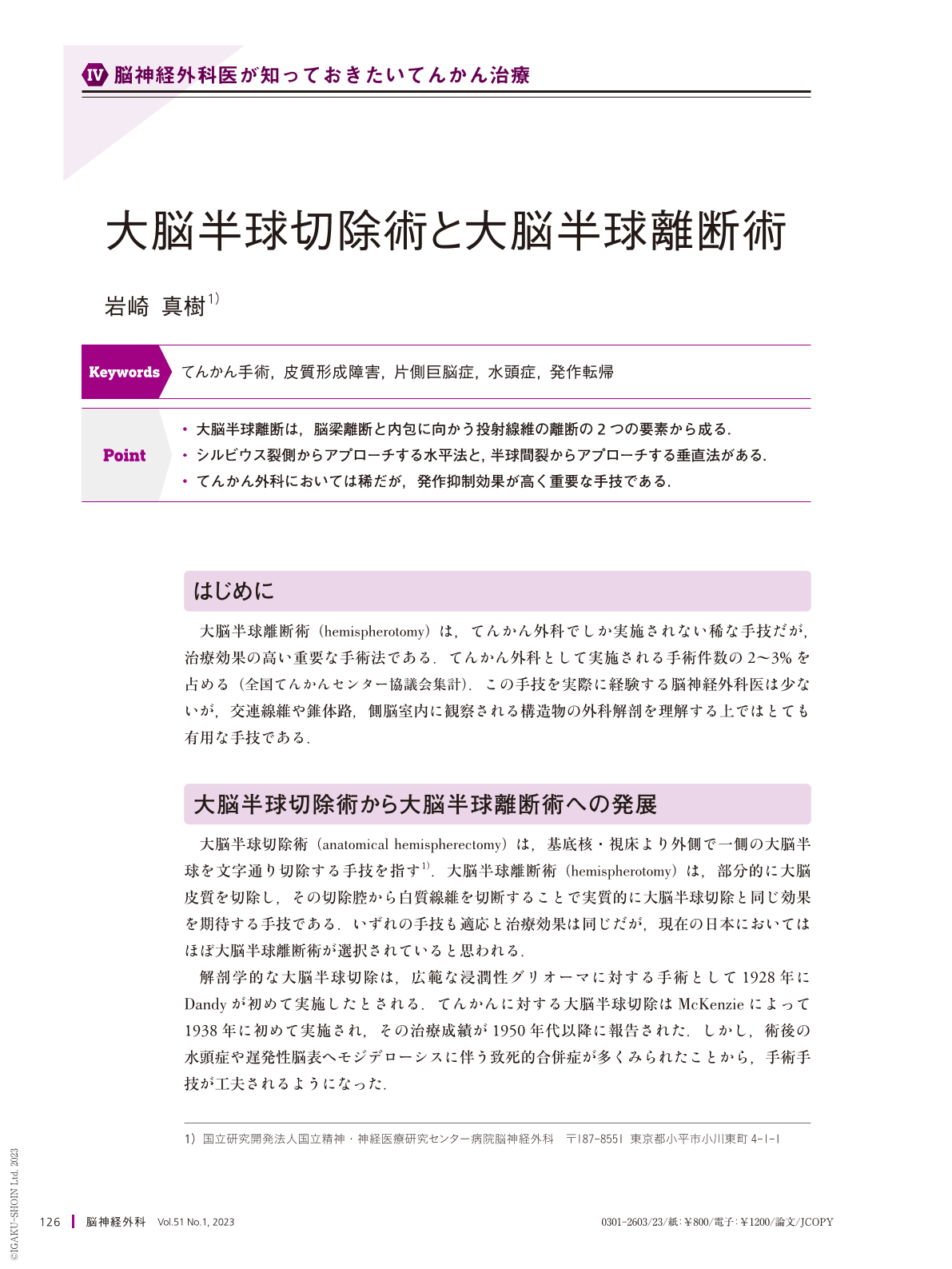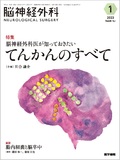Japanese
English
- 有料閲覧
- Abstract 文献概要
- 1ページ目 Look Inside
- 参考文献 Reference
Point
・大脳半球離断は,脳梁離断と内包に向かう投射線維の離断の2つの要素から成る.
・シルビウス裂側からアプローチする水平法と,半球間裂からアプローチする垂直法がある.
・てんかん外科においては稀だが,発作抑制効果が高く重要な手技である.
Hemispherectomy/hemispherotomy is an important surgical procedure for patients with drug-resistant epilepsy who have a unilateral large epileptogenic lesion associated with neurological deficits, such as hemiparesis. Hemispherotomy consists of corpus callosotomy and dissection of projection fibers into the internal capsule. Hemispherotomy has two major approaches: periinsular lateral hemispherotomy(PIH)and vertical parasagittal hemispherotomy(VH). The white matter is incised along the periinsular sulcus to disrupt the internal capsule before corpus callosotomy is performed within the lateral ventricle in PIH. Corpus callosotomy is performed first with an interhemispheric approach, the lateral ventricle is entered, and the internal capsule is disconnected just lateral to the thalamus in the VH. Both approaches have similar efficacy for seizure control; however, a recent study suggested the possible superiority of VH. The chance of complete seizure freedom for one or two postoperative years has been reported to be 70% or greater. The risk of postoperative hydrocephalus is as high as 20%, particularly in young children. In this article, we present and discuss the surgical anatomy of hemispherotomy techniques.

Copyright © 2023, Igaku-Shoin Ltd. All rights reserved.


